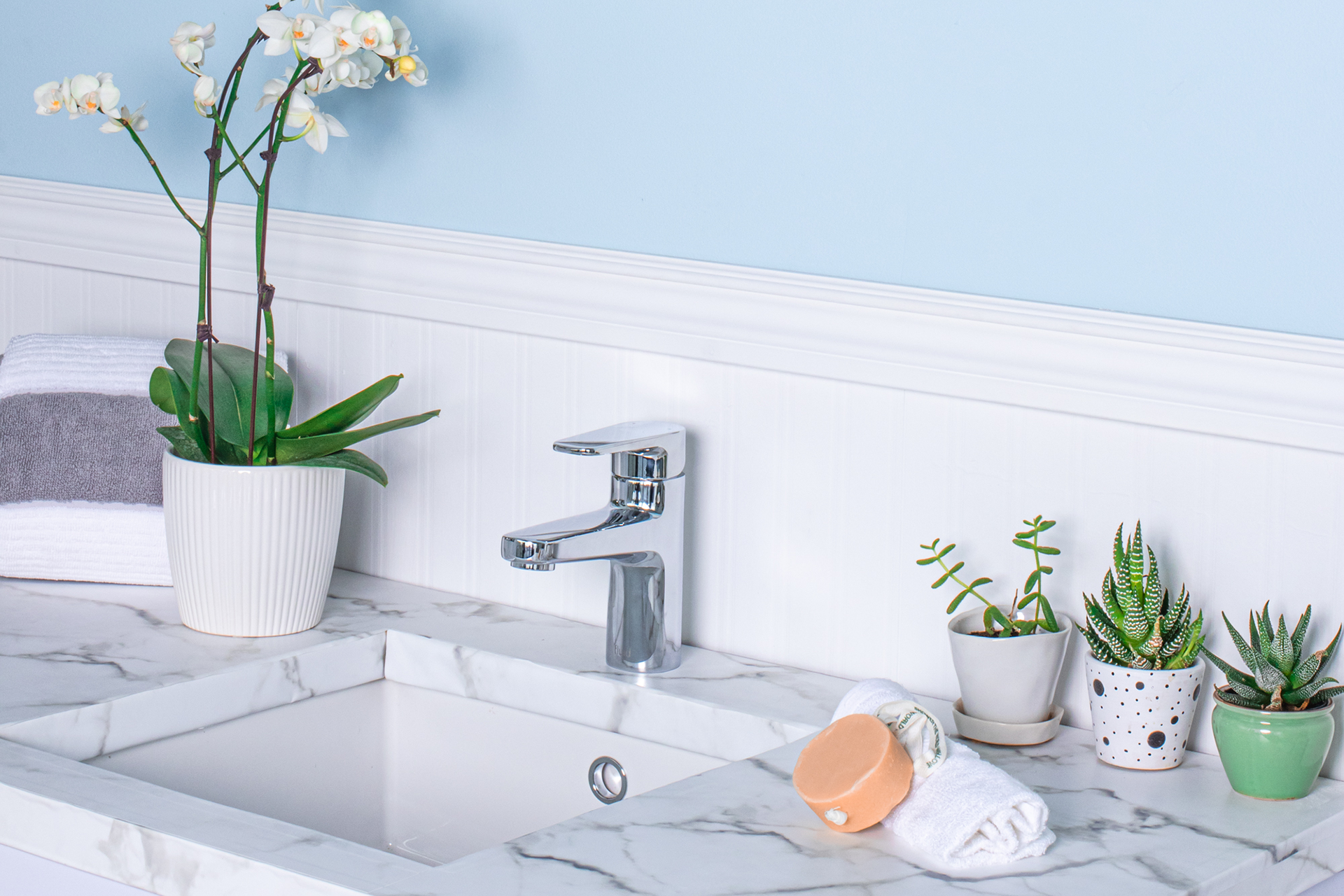- Resources
- Insider Tips
- faucets: 4 things you need to know...
faucets: 4 things you need to know...

Information that you didn't know you didn't know about faucets!
How many times a day do you use your bathroom faucet? Five? Ten? More? But, how much do you really understand about your faucet, how it works and how to properly maintain it? So, we would like to de-mystify a few terms and concepts relating to basin faucets and the cartridges that make them work.
We know; it’s a faucet! What’s to know? Well, a lot actually. The faucets we use today are drastically different from the ones that our parents used. Not only are there different styles and finishes, but we are so much more concerned with safety, performance and water conservation than ever before. Let’s look inside a faucet and see what we find!
1. What is a cartridge and Why is it so important?
2. Is regular faucet maintenance a really a thing?
3. What is the best way to clean my faucet?
4. Can my faucet actually be dangerous?
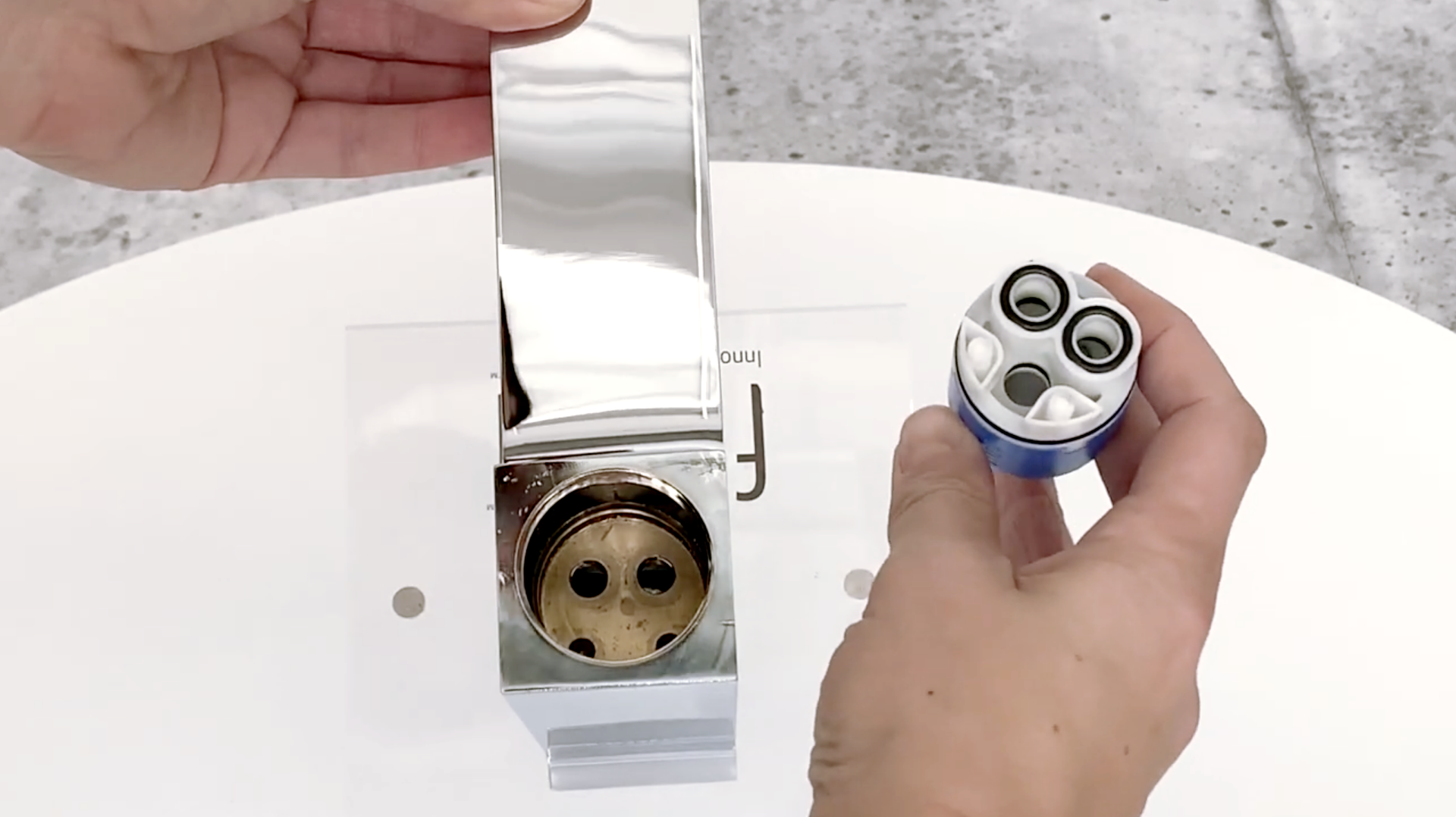
Cartridges:
You have likely seen/heard the term ‘ceramic disc’ faucet more times than you can remember, but what does it mean? It’s really quite simple.
Years ago homes featured compression faucets.
- They had two handles and you had to turn the handles round and round to turn the water off or on.
- Turning the handle compressed a washer inside the handle which shut off the water flow.
- You turned hot and cold by using the different handles and it was mixed in the faucet.
There are still some compression faucets around today. They are generally inexpensive, but they tend to leak quite easily and need to be repaired often. You also have to turn them several times to turn on or shut off the water and the feel of the turn is far from smooth.
Faucets today utilize newer technology and feature ceramic disc cartridges. The cartridge is the ‘brains’ of the faucet, where all of the heaviest work is done.
- The cartridge is made of two fire-hardened, smooth ceramic discs.
- The lower disc is stationary and the upper disc moves.
- As you turn the handle, the upper disc opens and closes, allowing water to pass or blocking the flow of water.
- By turning the handle to the left or right you vary the ratio of hot and cold water, which mixes together in the cartridge and flows out the faucet.
The other term often used for these faucets is ‘quarter turn’. This is because the full range of motion required to turn the water on or off is ¼ turn so this style of faucet is much easier and smoother to operate.
Ceramic disc cartridges were made popular by very high-end European manufactures and to this day most of the best cartridges originate in Europe. They are guaranteed for a lifetime and are very resilient to damage. Depending on the quality of the cartridge, they are also generally very smooth and luxurious to operate. But all ceramic cartridges are not created equally. It’s really good to research where the cartridge originated in any potential faucet purchase.
Maintenance
Most people don’t think about regular maintenance for faucets, but honestly there are a lot of benefits for some simple regular actions.
Did you know that every time there is a big rain storm in your neighbourhood the water rushes in to your sewer system and can enter the fresh water supply? This also happens when neighbours build or renovate their homes and dig near water lines, or the city does work on your street or you do some renovation work. None of this is dangerous, just annoying. Dirt and debris regularly enters the water supply and travels through your pipes, eventually making it to your appliances, faucets and fixtures. So, to keep getting your faucet operating at peak efficiency, it's a good idea to know a little about maintenance.
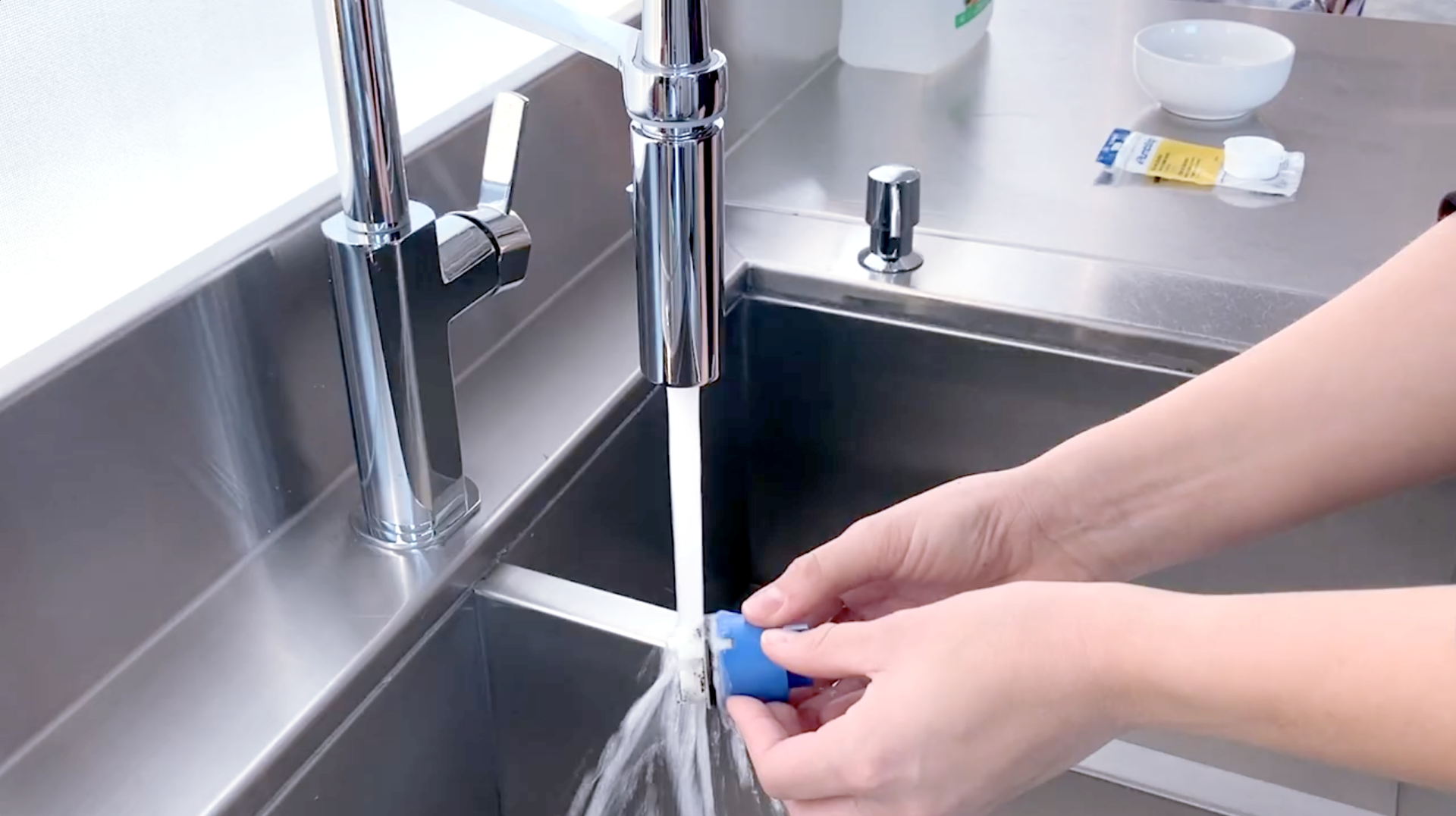
Cartridge maintenance:
While ceramic cartridges are incredibly durable. If dirt and debris get in, generally a quick rinse is enough to clean them out. The bigger issue is areas with hard water. This can mean that a calcium and minerals can build up over time, making the faucet less efficient and harder to operate. This too is generally fairly easy to fix. For both maintenance issues, you simply have to remove the cartridge and either rinse it, or if there is a lot of build up, you should soak it in a 50-50 water, vinegar mix for 30 minutes and rinse again. (Repeat as necessary). To see how to remove a cartridge, click here.
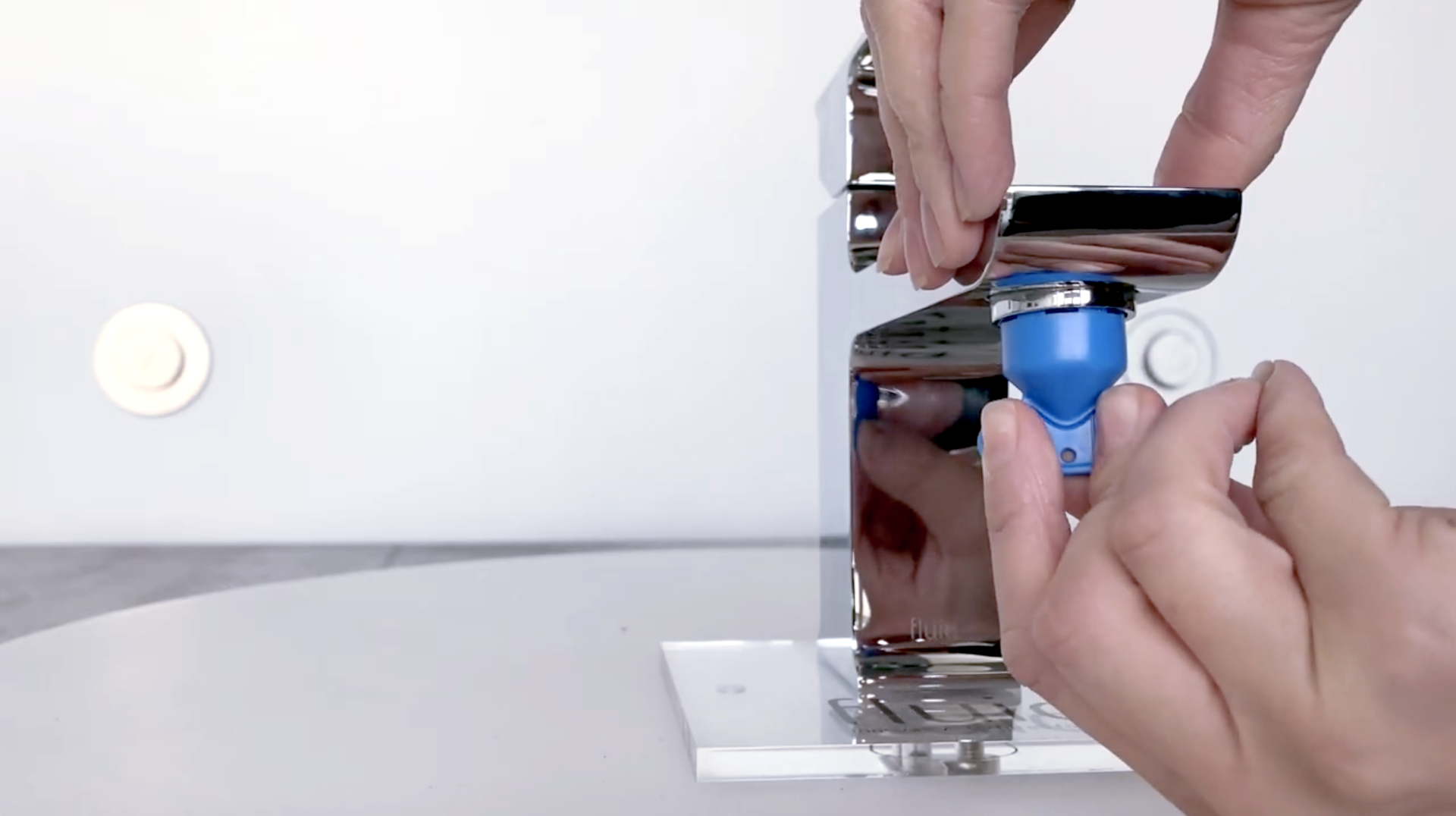
Blocked Aerators:
Have you ever noticed that the once wonderful stream of water from a faucet has slowed, or is irregular? Well dirt and debris in the line is most often the cause. At the end of your faucet you will generally have an aerator. The purpose of the aerator is as it sounds; to infuse air into the water, to give you a better, less abrasive flow of water and to aid water conservation, to allow a lower flow rate of water still feel luxurious. But it has a secondary function. There is a small screen at the end of your faucet that works as a filter for the incoming dirt. So, if you notice that the flow is a bit less than it used to be, don’t blame the faucet. It usually just means that the aerator is doing its job! If you remove the aerator, you will likely see a build-up of debris on the inside. All you have to do is rinse it out, replace the aerator and you are back in business. Your faucet will flow like it did when it was new. Click here to see how to remove a fluid swivel aerator is removed. (Swivel aerators allow you to direct the flow of water, preventing splash back).
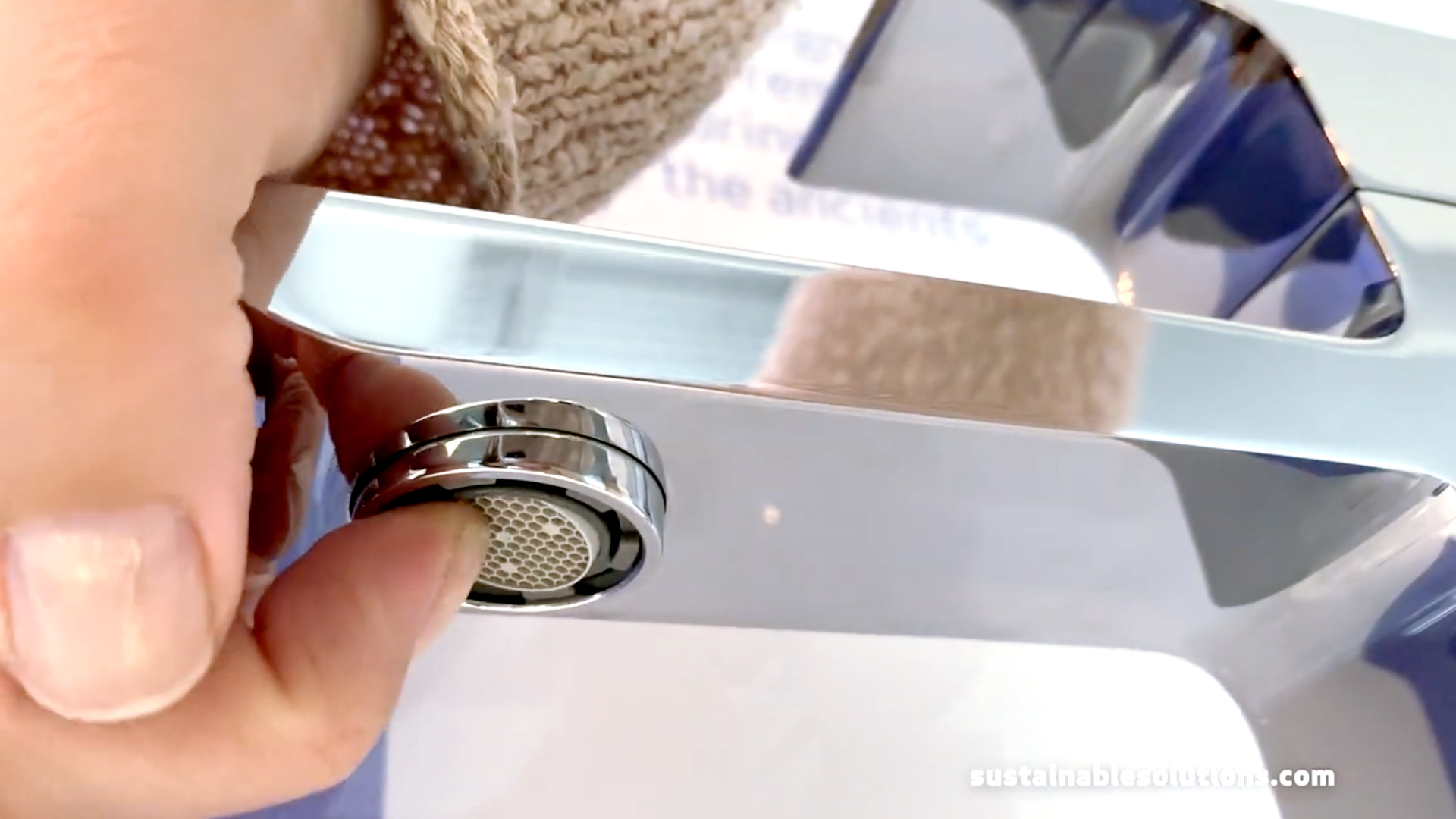
This is what we mean by ‘maintenance’. You aren’t really maintaining the faucet; you are just cleaning out the stuff that ends up in your water and your faucet was able to filter, preventing you from drinking it. This is much like cleaning out the lint trap of your dryer. This small action makes the appliance work better and last longer, just like regularly cleaning your aerator improves the performance of your faucet. So why wait until you notice a decreased flow of water? If you take the aerator off and clean it once a month or so, you should avoid the build up all together.
Cleaning
People are always asking us how they should clean their faucets. The beauty here is that simple really is best! Faucet finishes can be destroyed by harsh and abrasive cleaners. The rule of thumb here is – if you wouldn't use a cleaner on a favourite mirror, don’t use it on a faucet! But the great secret is, you don’t need harsh cleaners! One example of a great cleaning solution is a little bit of Dawn dishwashing liquid. If cleaned weekly this is all you need to keep your faucet sparkling and like new! If you live in a hard water area, you should really do yourself a favour and keep a soft absorbent cloth in a bathroom drawer and quickly dry off the faucet every time you use it. It might sound ridiculous but if left to evaporate, the minerals in hard water will be left behind and attach themselves to your beautiful faucet, giving it a green, white or chalky coating that eventually will destroy the finish. If you give it a quick daily wipe, those minerals will never build up, your weekly cleaning will be much easier and you will really extend the life of your faucet! Win-win-win!
Safety
Just how dangerous could a faucet be, right? Well, when we are talking faucet safety the biggest concern is with lead content. Older faucets did not regulate the amount of lead used to manufacture, but since the year 2000, all kitchen faucets sold in California have been ultra-low lead. Beginning in 2010, when any water fixtures and fittings intended to convey drinking water are replaced, they must be replaced with ultra-low lead products (containing no more than 0.25% lead).
How do you know if your faucet complies to the new standard? In the USA the national standard for certifying the "lead free" status of plumbing fixtures is National Sanitation Foundation (NSF) International Standard 61-Section 9. New faucets meeting the NSF 61 standard will have NSF 61/9 stamped on the new faucet’s cardboard box.
See? There is lots to know about your faucet, both to help you choose the best one to buy and to help keep them in tip-top shape.
Faucet maintenance isn't really about maintaining the faucet, it is about cleaning out the debris that can build up from the city water lines.


